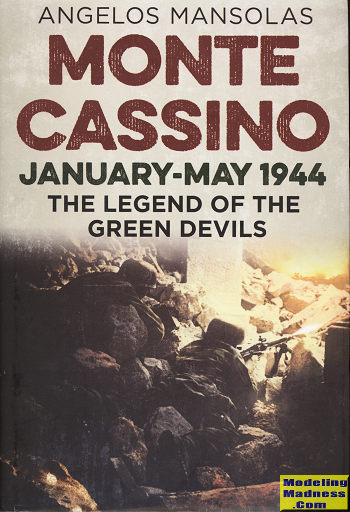 Monte
Cassino was one of the best examples of how to defend a territory as was shown
during WWII. Italy was pretty much a secondary theater in Europe. The Allies
were focused more on the invasion of northwest Europe than any other area of the
European Theater. It was also a fairly secondary theater for the Germans, but
with the withdrawal from the war by Italy, Germany had to send troops to slow
down the Allied advance. Frankly, the Germans were not only quite successful in
removing troops from Sicily, but also in holding back Allied advances northward.
Monte
Cassino was one of the best examples of how to defend a territory as was shown
during WWII. Italy was pretty much a secondary theater in Europe. The Allies
were focused more on the invasion of northwest Europe than any other area of the
European Theater. It was also a fairly secondary theater for the Germans, but
with the withdrawal from the war by Italy, Germany had to send troops to slow
down the Allied advance. Frankly, the Germans were not only quite successful in
removing troops from Sicily, but also in holding back Allied advances northward.
Of course, this was 'helped' by the US having General
Mark Clark as the man in charge. Here is an ego bigger than Patton's or
Montgomery's whose only reason for prosecuting the war in Italy was to get to
Rome and enter the city as its liberator. Hence the landing at Anzio which came
to a screeching halt and was almost pushed back into the
sea. It also provides a reason that a frontal assault up the Liri Valley was
deemed to be necessary. Never mind that the Germans had been provided sufficient
time to fortify this area. Never mind that it was defended, in the most part, by
some of the toughest and most tenacious troops the Germans had, the
fallshirmjaegers. These are the 'green devils' mentioned in the book's title.
The Liri river valley was
surrounded on both sides by mountain ranges. On one side was the ancient
monestary of Monte Cassino, which overlooked the entire entrance to the valley.
The Germans had promised that they would not place troop in the monastery, a
promise that they kept. The Allies had also promised that they would not attack
it. However, as it turns out, that was a promise broken and it was bombed to
rubble. One thing about rubble is that it makes for
a great defensive position so the Germans quickly moved in.
On the Allied side, Clark ordered
frontal assaults. These assaults had to cross the river, which was flowing
strong. The results of their assaults was carnage as unit after unit was either
decimated trying to cross or unable to make a bridgehead across the river. No
cover and the Germans on the high ground in addition to well place mine fields
and lots of barbed wire made advancement pretty much impossible.
Allied bombing of the German
positions also proved to be ineffective. Tank warfare was nearly impossible as
well as tanks do not do well in mountainous terrain and attempts at using tanks
only meant a lot of destroyed and disabled armor littering the battlefield.
Still, Clark insisted on frontal assaults, despite the
recommendations of some of his commanders that there was a better way. This did
little more than reduce the combat effectiveness of units down to near zero. On
the German side, all these attacks took their toll, but when you have the best
defending, you can accomplish much. German supplies were still able to come in
and keep weary troops in bread and bullets.
Monte Cassino has to be one of the heroic struggles of
all time, on both sides of the lines. The stiff German resistance, even when
greatly outnumbered along with the bravery and dogged determination of the
Allies, even with failed attack after failed attack makes for an incredible
read. A book that does a superb job of telling the story on both sides and one
that I give my hightest recommendation.
May 2019
Copyright ModelingMadness.com. All rights reserved.
Review book courtesy of
Casemate Publishing, where you can order your copy
from
this link.
If you would like your product reviewed fairly and quickly, please
contact
the editor or see other details in the
Note to
Contributors.
 Monte
Cassino was one of the best examples of how to defend a territory as was shown
during WWII. Italy was pretty much a secondary theater in Europe. The Allies
were focused more on the invasion of northwest Europe than any other area of the
European Theater. It was also a fairly secondary theater for the Germans, but
with the withdrawal from the war by Italy, Germany had to send troops to slow
down the Allied advance. Frankly, the Germans were not only quite successful in
removing troops from Sicily, but also in holding back Allied advances northward.
Monte
Cassino was one of the best examples of how to defend a territory as was shown
during WWII. Italy was pretty much a secondary theater in Europe. The Allies
were focused more on the invasion of northwest Europe than any other area of the
European Theater. It was also a fairly secondary theater for the Germans, but
with the withdrawal from the war by Italy, Germany had to send troops to slow
down the Allied advance. Frankly, the Germans were not only quite successful in
removing troops from Sicily, but also in holding back Allied advances northward.